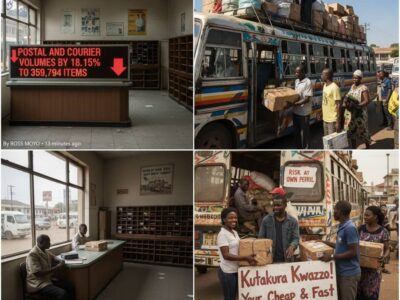By Ross Moyo
Platinum production surged to a record 507 000 ounces (oz) last year, a 6 percent increase from 2022, driven by investments that boosted operational stability for the first timw in Zimbabwe.
Zimplats, Zimbabwe’s largest mine is developing an integrated PGM mine that will become one of the largest PGM assets in the country, producing 190 000 oz to 200 000 oz of PGMs on annually. Anglo American Platinum local unit Unki Mine’s total PGM production increased by five percent to 243 800 oz last year from 232 100 oz in 2022. The firm benefitted from the concentrator debottlenecking project completed in 2022. Unki’s debottleneck project, which was completed in 2021 and reached optimum production in 2022, was done at a cost of US$48 million, with the expansion targeted to increase throughput capacity. Unki, 100 percent owned by Anglo Platinum America, has its operations on the Great Dyke in Zimbabwe, 60 kilometres southeast of the town of Gweru.
The Southern African country has the world’s second-largest platinum group metals (PGM) resource along the mineral-rich Great Dyke, after South Africa though other reports state Russia second and Zimbabwe third. Several upcoming and expansion platinum projects valued at over US$8 billion are expected to position Zimbabwe as a global platinum powerhouse. World Platinum Investment Council (WPIC), in its latest world platinum production report, said Zimbabwe’s output continued its steady increase, “surpassing the 500 000 oz milestone for the first time.”
“The country benefits from operational stability, mechanised mining methods, resulting in fewer safety stoppages, and stable workplace relations. The realisation of volumes from the commissioning of the third concentrator at Zimplats and the Unki concentrator debottlenecking project contributed to the record production,” WPIC said.
The country’s operating PGM mines, Zimplats, Unki and Mimosa are majority owned by South African companies and have been involved in different expansion and new mine development projects at a time when commodity prices continue to weaken. Zimbabwe’s largest platinum producer, Zimplats, says all major capital projects under execution are progressing according to plan as the group seeks to expand capacity.
Zimplats’ strategy Under its US$1,8 billion capital expenditure investment, involves the setting up of integrated projects, including the development of new mines; the expansion of the smelter; the construction of an additional concentrator, a base metal refinery, a sulfuric acid plant; and the setting up of a 110-megawatt solar power plant. According to the WIPC, in the fourth quarter of 2023, Zimbabwe’s platinum output increased by 8 percent to 133 000 oz from 123 000 oz in Q4 2022.
“Zimbabwe’s quarterly production rose by an estimated 8 percent year-on-year, reaching an all-time high of 133 000 oz.
“All three of the country’s operations demonstrated year-on-year growth, with Unki accounting for the bulk of this through increased throughput and head grade,” reads the report. Zimbabwe’s production is poised to maintain its “long-term stability, with minimal changes” expected on a year-on-year basis. This growth rate indicates a positive trend in Zimbabwe’s platinum mining sector and highlights the country’s efforts to enhance its production capacity and output levels. Karo Platinum Holdings is going ahead with the development of its platinum mine despite the falling PGM prices, with US$100 million already spent on mine infrastructure development. The mining company’s project in Zimbabwe is an open-pit platinum group metals (PGMs) asset under construction at a projected cost of US$391 million for phase 1.
As it stands, Zimbabwe is in record platinum output, but platinum production boomed in 2023, exceeding half a million ounces for the first time, yet miners are now grappling with slumping global prices and are resorting to cost-cutting measures to stay afloat.













Comments